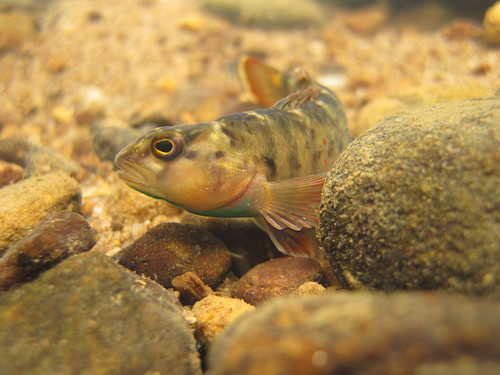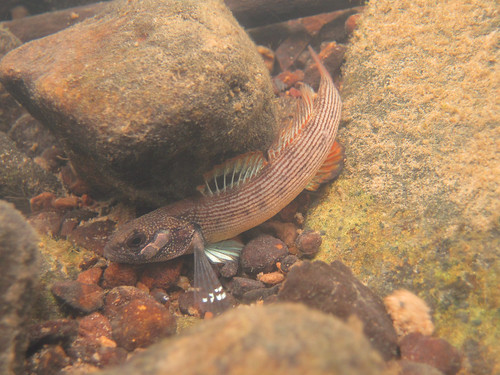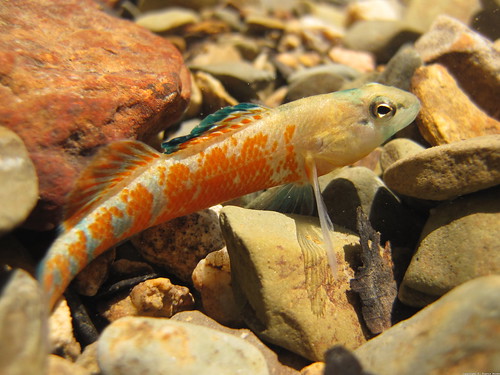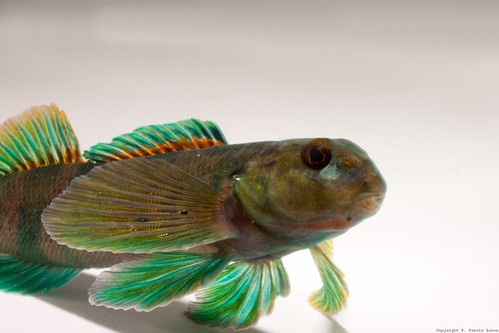Spring is the time to look for colorful things. Birders chase warblers arriving from down south. Reptile and amphibian enthusiasts (herpers) take to the field with hopes of finding brightly colored salamanders and snakes. Wildflower lovers head to the forest in search of blooms. There is, however, a group of animals that relatively few people think about looking for—the darters. Darters are a group of small fish in the perch family that are known for their bright colors. Unlike the majority of our freshwater fish, most darters lack a swim bladder—the gas-filled organ that makes fish buoyant. These “gravel jacks,” as they are sometimes called, dart quickly from place to place almost as if they are jumping on their large front fins.
Beginning as early as February, the males’ bright colors begin to intensify for breeding season. In some species this results in colors that rival even the most impressive tropical fishes, yet several darter species can be found in small streams in our back yard!

This is where darters get their name!

Here’s that same species, the speckled darter. It can be found in streams just south of Louisville.

The banded darter is another relatively common local darter. They can be found in large local creeks, such as Floyds Fork, and often seem to prefer submerged vegetation.

The logperch, although relatively drab, is the largest darter in Kentucky. It can often be found on the bottom of small pools in larger local creeks.

The bluebreast darter is found throughout our area, but seems to have a very spotty distribution.

The best place to look for darters is in riffles and just upstream and downstream of this fast water. The fact that darters lack a swim bladder allows them to sit on the bottom of swift water without constantly having to fight the current, and many species call riffles home. However, there are species that are adapted to slower pools, swamps, submerged vegetation, and many other types of aquatic habitat. They are easily caught with seines or dipnets (you will need a fishing license), but my favorite way to find them is by snorkeling in small, clear streams. Sticking your head under the water opens up a whole new world. Even if the water is relatively shallow, it seems there is still five times as much going on under there than we can see from the surface!



 4:50 PM
4:50 PM










1 comments:
Nice photos! I love darters, too bad they get overlooked.
Post a Comment